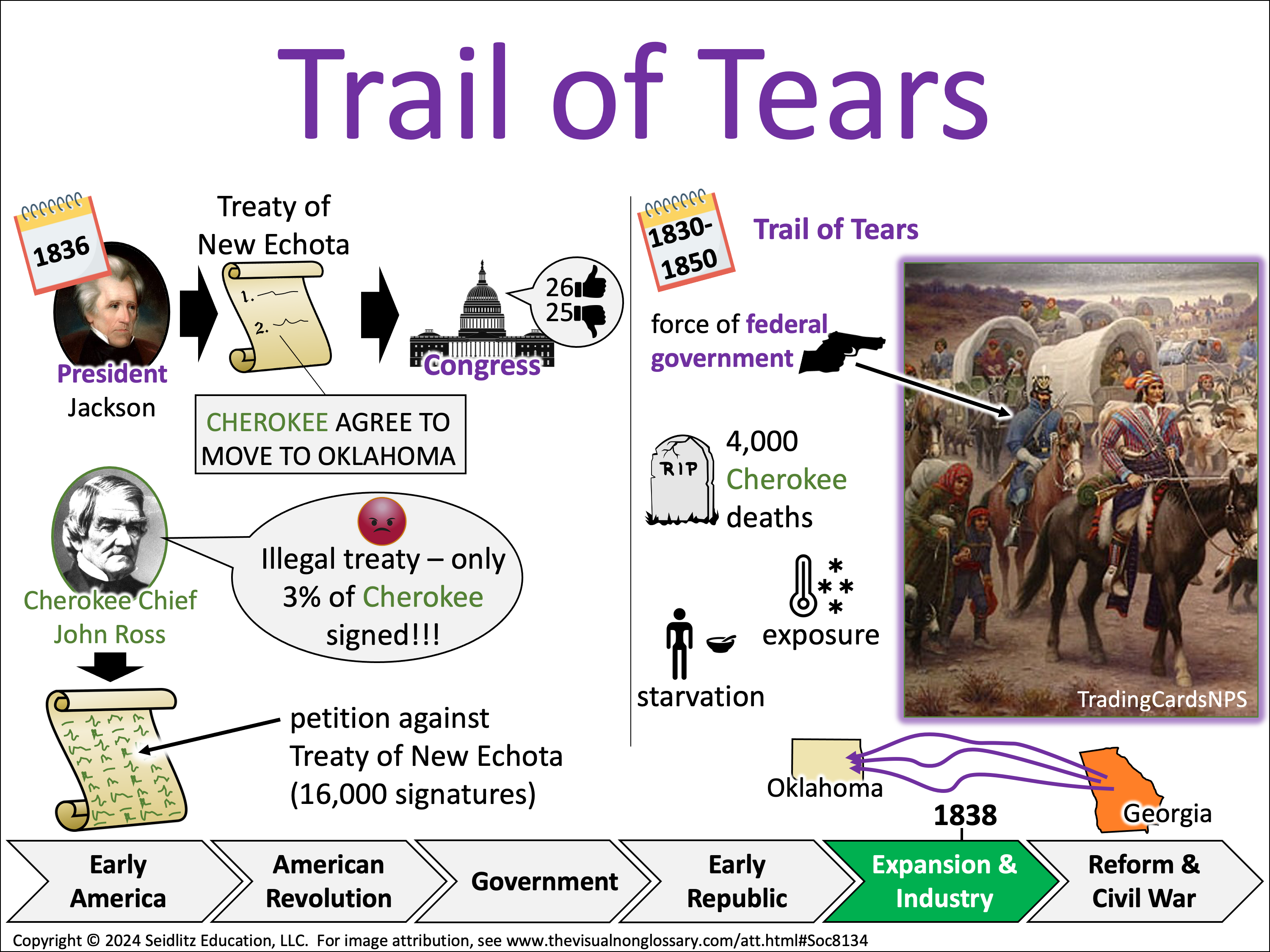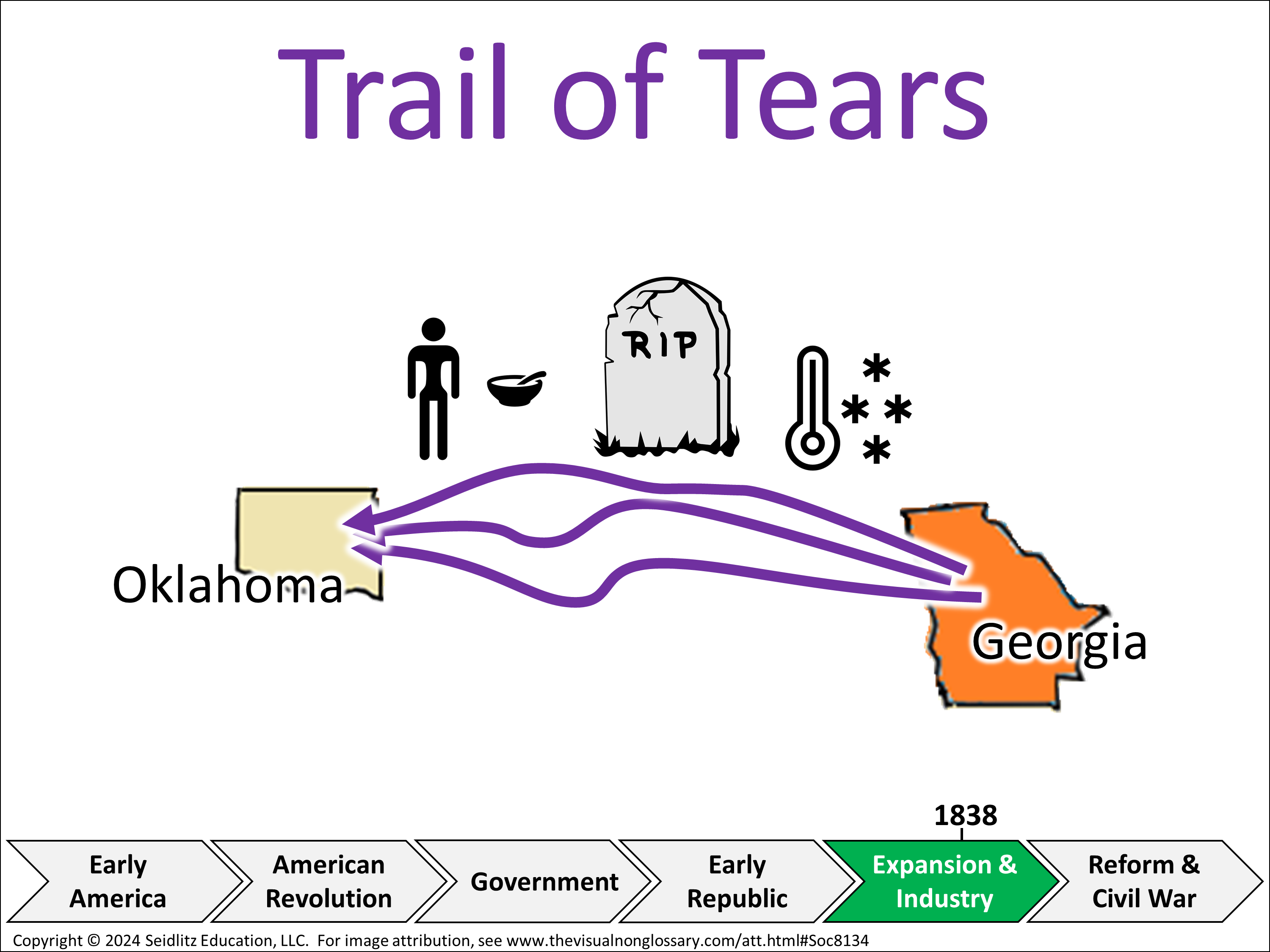Trail of Tears: US History 1450-1877 (8th) 🌐 Ver en Español
History
Removal and Resettlement of the Cherokee Indians
Vertical Alignment
TEKS:
| 8th | 8.5 (H) |
Linked To
Downloads
- Visual
- Word wall visual
- Lesson Plan
- Lesson Materials
Structured Conversation Questions
Observational
How did the Trail of Tears occur?
The Trail of Tears is related to the Indian Removal Act because...Relational
How was the Trail of Tears related to the Indian Removal Act?
The Trail of Tears was related to the Indian Removal Act because…Inferential
Genocide is the intentional act to destroy an entire people. How is the Trail of Tears an example of genocide?
The Trail of Tears is example of genocide because...
Please log in to comment.
Students might notice in this visual:
- The Cherokee people are walking long distances by foot and in wagons.
- There is snow on the ground, indicating harsh winter conditions.
- U.S. soldiers are shown accompanying or overseeing the group.
- Families, including children and elders, are part of the journey.
- The people appear tired, sad, or in distress.
EXTENDING THE DISCUSSION
After the observational question, randomly call on one or more students to share what they or their partner answered. Then ask the class, “Did anyone notice…?” using the suggestions above or anything else you’ve noticed.
After the observational question, randomly call on one or more students to share what they or their partner answered. Then ask the class, “Did anyone notice…?” using the suggestions above or anything else you’ve noticed.
Students might wonder:
- Why were the Cherokee forced to leave their homes?
- What role did the government or soldiers play in this event?
- How far did the Cherokee have to travel?
- What happened to these people after the journey?
- Did anyone try to stop or protest the removal?
EXTENDING THE DISCUSSION
After students have shared what they notice, ask the class, “Did anyone wonder…?” using the suggestions above or anything else you might think is interesting or relevant to the lesson.
After students have shared what they notice, ask the class, “Did anyone wonder…?” using the suggestions above or anything else you might think is interesting or relevant to the lesson.
Example student responses
To the observational question, How did the Trail of Tears occur?
LOW-LEVEL
This image shows Cherokee people walking through the snow with soldiers watching them.
HIGH-LEVEL
This image shows the forced removal of the Cherokee people during the Trail of Tears, where they were made to travel in harsh winter conditions under military supervision.
RESPONDING TO RESPONSES
Emphasize and celebrate each student’s use of the key vocabulary to support a culture of “no wrong answers.”
Emphasize and celebrate each student’s use of the key vocabulary to support a culture of “no wrong answers.”



